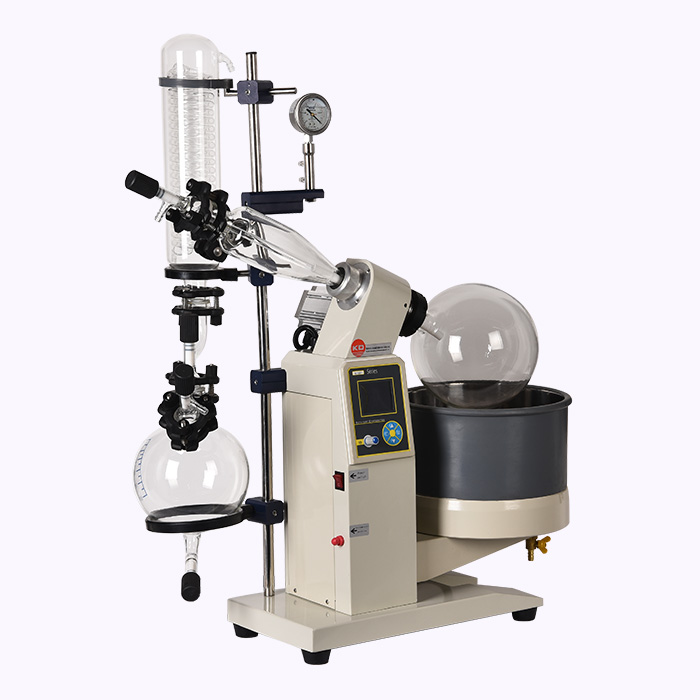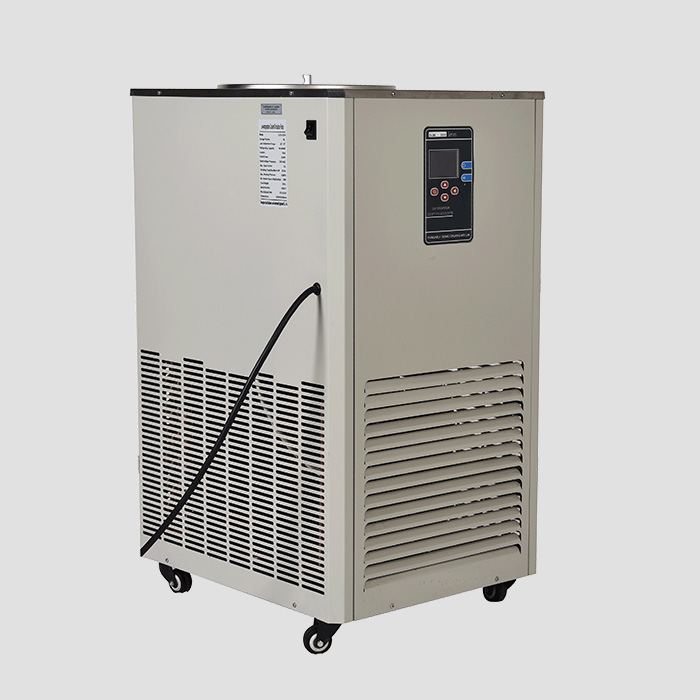The difference between rotary distillation and vacuum distillation
ZZKD manufactures and supplies rotary evaporators as well as its associated equipment such as cryogenic pumps, circulating water vacuum pump, rotary vane vacuum pump,Rotary evaporator is a distillation equipment, so what is the difference between rotary distillation and vacuum distillation?

Rotary distillation is an operation of vacuum distillation using a rotary evaporator. The effect of rotary distillation is to evaporate the solvent, which is more efficient than the general method.Principle: First, rely on decompression; second, when rotating, make the solution form a liquid film and expand the evaporation area.The following specific introduction to the principle of rotary distillation.
Principle of rotary distillation
By electronic control, the flask is rotated at a constant speed at the most suitable speed to increase the evaporation area.The evaporation flask was brought to a negative pressure by a vacuum pump.The evaporation flask was heated in a water bath while rotating at a constant temperature, and the solution in the bottle was subjected to heat diffusion evaporation in a rotating flask under a negative pressure.The rotary evaporator system can seal the pressure to 400-600 mm Hg;Heating the solvent in the distillation flask with a heating bath, the heating temperature is close to the boiling point of the solvent;At the same time, the rotation can be carried out at a speed of 50 to 160 rpm, so that the solvent forms a film and the evaporation area is increased.In addition, under the action of a high-efficiency cooler, the hot vapor can be quickly liquefied to accelerate the evaporation rate.

The difference between vacuum distillation and rotary distillation
When the rotary evaporator is distilled under reduced pressure, the distillation speed is fast because of the large surface area of the solution.
The distillation under reduced pressure is much slower, and zeolite is added.
Of course, if the distillation is carried out under reduced pressure due to the purification of the product, it is necessary to control the temperature of the fraction, and it is necessary to use a general vacuum distillation; if it is simply for concentration, it is recommended to use a rotary steaming.
The difference is not big, the rotary steam is generally used for the extraction and concentration of solid medicines, and the steam reduction is more used for the drying treatment of liquid medicines which are easy to decompose. Generally, the difference is not large, and the distillation can prevent the medicine from being sprayed out.




